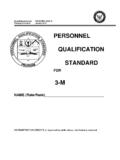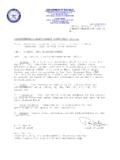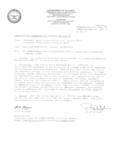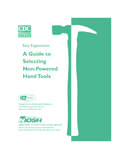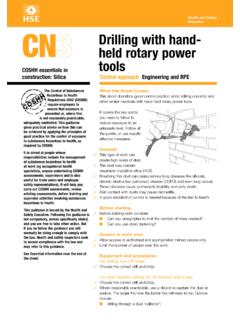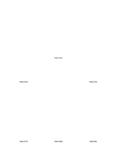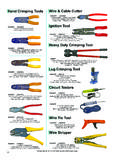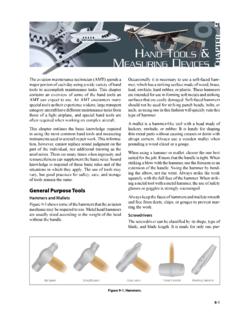Transcription of COMMON HAND TOOLS AND THEIR PROPER USE …
1 1 COMMON HAND TOOLS ANDTHEIR PROPER USEFrom Machine Shop WorkbyJohn T. ShumanDigitally reprinted by Shopdawg 2006 Kevin Bohn, .. 3 SCREW DRIVERS .. 4 WRENCHES .. 6 THE BENCH VISE .. 9 THE HACK SAW .. 123 COMMON HAND TOOLSS imultaneous use of hand TOOLS and machines. Machine shop work is usually understood to include all cold metal work in which a portion of the metal is removed, either by power-driven or hand TOOLS , to make the piece of the required shape and size. However, there are some branches of cold metal work, such as sheet-iron work and coppersmithing that are not usually includ-ed in machine shop the hand-operated TOOLS are much simpler, and as the operations performed with them are in every case more typical, THEIR descrip-tion and use should precede that of power-driven TOOLS .
2 It should be clearly understood, however, that machine shop practice involves the use of both classes at the same time. Even hand TOOLS are not used in the same order on different classes of work; it is, therefore, impossible to describe them in the order of use. Simplicity of con-struction and operation will be the guide for discussing the uses of various The machinist uses hammers of three shapes: ball peen, cross peen, and straight peen, Fig. 1. The ball peen is the most COMMON ; it varies in weight from 4 ounces to 3 pounds.
3 The cross peen and straight peen hammers vary from 4 ounces to 2 pounds and are used principally in riveting. Hammers are made from a good grade of tool steel, hardened, and drawn to a blue color at the eye and a dark straw on the face and peen. The eye is elliptical in shape, and the handle is fastened by driving wedges, either wood or iron, into the end of the handle, thus spreading it to fill the eye. The handle is of hard wood, preferably hickory, and of a length suited to the weight of the hammerhead. When the handle is properly inserted, the axis of the head stands at right angles to the axis of the Hammers.
4 Soft hammers are used for striking heavy blows where the steel 4hammer would bruise the metal or mar the surface. They are made of rawhide, copper, or Babbitt metal, and vary in weight from 6 ounces to 6 pounds. They are subject to rapid wear, but are indis-pensable in setting up and taking down To Use Hammers1. Make sure the head is fastened securely. If the handle is loose, drive the wedge farther into the handle. A loose hammer head is Grasp the hammer firmly near the end of the Start all work with light blows to get it started DriversOn tool work of various kinds flat head and fillister head screws and set screws are used.
5 Therefore it is necessary for the toolmaker to have one or more screw drivers to drive these screws or to re-move drivers are made with blades of various widths, in lengths suited to special purposes. Fig. 2 shows a regular type screw driver. The blade section is made of forged carbon tool steel, heat treated to give the hardness and toughness needed to withstand the twist-ing motion employed in driving a screw. Wooden handles are fastened to the blades with stubby ball-handle screw driver is used on jobs where there is little clearance.
6 The handle is designed to fit the palm of the hand and to give a firm grip. With this type of screw driver it is possible to handle large size it is necessary to make up special screw drivers for driving the largest size screws. For this purpose a piece of drill rod is used. The blade section is forged to the PROPER width, ground to the approximate size, then heat treated. Often a square or flat is milled on the shank so a wrench can be used for added leverage. In some cases a hole is drilled through the shank so that a steel pin or bar can be inserted to provide Screw DriversThis screw driver, Fig.
7 3, is made so that screws can be tightened or removed in places that would be inaccessible to the ordinary type of screw driver. Four blades cover eight different positions of the screw slot. A turn of only 1/8 inch is required for To Use Screw Drivers1. See that the tip of the screw driver is in good condition, the bot-tom squared, and the sides straight, as shown in Figs. 4 and With the right hand, grasp the handle. With the left hand, guide the tip into the screw slot, as shown in Fig. Tightening large screws.
8 Use a square-shanked screw driver, and with a wrench that fits the square shank, turn the screw driver. See Fig. 7. Pressure must be kept on the handle to keep the tip in the slot. 64. Do not strike the handle of the screw driver with a hard object. This will split the handle. 5. Do not use your screw driver as a wedge, or chisel. 6. Be sure that the screw driver fits the screw Why should a screw driver blade have parallel sides?2. Why are screw driver blades made from carbon tool steel?3. Why are the larger sizes of screw drivers frequently made with square blades?
9 4. How is a screw driver blade hardened? Why?5. What is an offset screw driver?6. How should a screw driver be held?7. Why is it necessary to exert two different forces when using a screw driver, namely, turning force and a holding or pushing force?8. What method can be used to make the tightening of large screws easier?9. What might happen if the screw driver jumps out of the screw slot?10. What might cause a screw driver to jump from the screw slot?WrenchesMany different types of wrenches are made for turning nuts, bolts, pipes, etc.
10 They usually derive THEIR names from characteristic shapes as S wrench, angle wrench; from the object they are used to turn, as pipe wrench, tap wrench; or from THEIR construction, as spanner wrench. See Fig. the correct sizes are available, the open and closed end types of wrenches are to be preferred to the adjustable wrenches. Since the wrench is a lever the mechanical advantage or the lever-age secured is in proportion to the length of the handle. Usually, the handle of a solid wrench is made so that it will give all the le-verage the part to be turned will probably stand.
